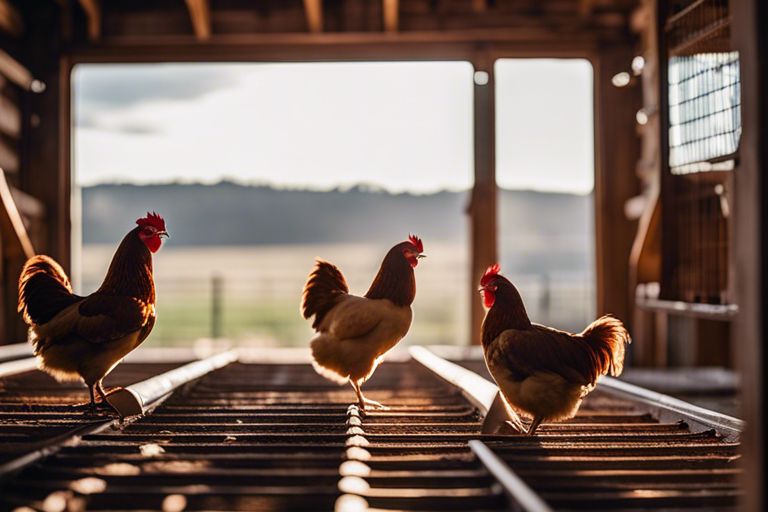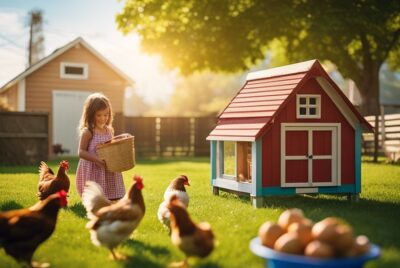Heating Solutions for Winter – Keeping Your Chickens Warm
Heating is essential to ensure the well-being and comfort of your chickens during the cold winter months. As temperatures drop, it’s crucial to provide adequate warmth for your feathered friends to prevent frostbite and maintain egg production. In this blog post, we will discuss effective heating solutions to keep your chickens cozy and healthy throughout the winter season.
Insulating Your Chicken Coop
As we approach the colder months, it’s essential to ensure your chicken coop is properly insulated to keep your feathered friends warm and healthy. Insulating your chicken coop can help maintain a comfortable temperature inside, even when the weather outside is harsh. Here, we will discuss the types of insulation materials you can use and provide a step-by-step guide to help you insulate your chicken coop effectively.
Types of Insulation Materials
When it comes to insulating your chicken coop, there are several types of insulation materials you can choose from. Each material has its advantages and disadvantages, so it’s essential to select the one that best suits your needs. Knowing the characteristics of each insulation material can help you make an informed decision.
| Insulation Material | Characteristics |
|---|---|
| Straw | Excellent at retaining heat, but can attract pests if not properly stored. |
| Foam Boards | Provides good insulation and is easy to install, but may be more costly. |
| Fiberglass | Effective insulation, but can be irritating to skin and eyes during installation. |
| Bubble Wrap | Cost-effective and easy to install, but may not provide as much insulation as other materials. |
| Reflective Foil | Reflects heat effectively, but may require professional installation for optimal results. |
Step-by-Step Insulation Guide
Insulating your chicken coop is a crucial step in ensuring your chickens stay warm and healthy during the winter months. Here is a step-by-step guide to help you insulate your chicken coop effectively:
| Step | Instructions |
|---|---|
| Clean the Coop | Remove any debris or dust from the coop to ensure a clean surface for insulation. |
| Seal Cracks and Gaps | Use caulk or weather-stripping to seal any cracks or gaps in the coop walls to prevent drafts. |
| Choose Insulation Material | Select the insulation material that best suits your needs and install it according to the manufacturer’s instructions. |
| Insulate Ceiling and Walls | Insulate the ceiling and walls of the coop to trap in heat and keep the interior warm. |
| Monitor Temperature | Regularly check the temperature inside the coop to ensure it stays at a comfortable level for your chickens. |
Insulating your chicken coop is a necessary step to ensure your chickens stay warm and healthy during the winter months. By following this step-by-step guide and selecting the right insulation materials, you can create a cozy and comfortable environment for your feathered friends to thrive in.
| Important Considerations | Additional Tips |
|---|---|
| Proper insulation helps regulate temperature inside the coop. | Ensure proper ventilation to prevent moisture buildup. |
Heating Options for Chicken Coops
Even though chickens are resilient animals, it’s important to provide them with adequate heating options during the cold winter months to keep them healthy and comfortable. Choosing the right heating solution for your chicken coop can make a significant difference in maintaining the optimal temperature for your flock.
Safe Heat Lamp Usage and Alternatives
Lamp heating is a common method used by many chicken owners to provide warmth in the coop. While heat lamps can be effective, they also come with a higher risk of fire hazards if not used properly. To ensure the safety of your chickens, always secure the heat lamp in a way that prevents it from falling and keep it away from any flammable materials.
Alternatively, you can explore safer options such as ceramic heat emitters or radiant heaters. These alternatives provide heat without the risk of fire, making them a more secure choice for heating your chicken coop.
Automated Temperature-Controlled Heaters
Automated temperature-controlled heaters offer a convenient and efficient way to regulate the warmth in your chicken coop. These heaters are equipped with sensors that detect the temperature inside the coop and adjust the heat output accordingly. They provide consistent warmth without the need for constant monitoring, making them a popular choice among chicken owners.
| Pros | Cons |
| Easy to use | Higher initial cost |
| Energy-efficient | Requires electricity |
Automated temperature-controlled heaters are a reliable option for keeping your chickens warm and comfortable throughout the winter season. Their smart technology allows you to set the desired temperature and let the heater do the rest, ensuring a cozy environment for your feathered friends.
Heat
| Ceramic Heat Emitters | Radiant Heaters |
| Provide consistent heat | Safe for indoor use |
| No light emitted | Energy-efficient |
Maintaining Optimal Coop Conditions
Monitoring Temperature and Humidity
To ensure that your chickens stay healthy and comfortable during the winter months, it is crucial to monitor the temperature and humidity levels inside the coop. Inadequate heating can lead to health problems, while excessive humidity can result in moisture-related issues like frostbite. Here’s a breakdown of how to maintain optimal conditions:
| Temperature | Humidity |
| Keep the coop temperature above freezing to prevent frostbite. Use heaters or heat lamps if needed. | Humidity levels should ideally be between 40-60%. Use a hygrometer to monitor and adjust as necessary. |
Ventilation and Preventing Moisture Buildup
On top of monitoring temperature and humidity, proper ventilation is key to preventing moisture buildup inside the coop. Poor ventilation can trap moisture and ammonia from chicken droppings, leading to respiratory issues and other health problems. Here are some ways to ensure adequate ventilation:
Optimal ventilation can be achieved by installing vents at the top and bottom of the coop to allow for proper air circulation. This will help regulate moisture levels and keep the air fresh for your flock. Additionally, using bedding materials that absorb moisture, such as pine shavings, can help maintain a dry environment.
Additional Warmth Strategies
Bedding Materials and Warmth Retention
Bedding materials play a crucial role in keeping your chickens warm during the winter months. Choose materials such as straw, hay, or wood shavings that provide good insulation and absorb moisture. Thicker bedding helps to retain heat and keep your coop cozy. Make sure to regularly clean and replace bedding to maintain a dry environment and prevent the buildup of ammonia, which can be harmful to your flock’s respiratory health.
Consider adding extra insulation under the bedding for added warmth. This could include using foam boards or insulating blankets to further protect your chickens from the cold. Proper ventilation is still essential to prevent moisture buildup, so be sure to balance insulation with adequate airflow.
Dietary Considerations for Cold Weather
The diet of your chickens can also play a significant role in keeping them warm during the winter. Provide your flock with a balanced diet that includes plenty of protein to help them generate heat. Consider offering warm oatmeal or cooked grains as treats to give them an extra boost of energy during cold spells. Additionally, make sure they have access to fresh, unfrozen water at all times to prevent dehydration.
The winter months can be challenging for chickens to forage for insects and fresh greens, so consider supplementing their diet with mealworms or other protein-rich treats. This will help them maintain their energy levels and stay warm during the coldest months of the year.
Final Words
Conclusively, ensuring your chickens stay warm during the winter months is crucial for their health and well-being. By providing proper heating solutions such as insulated coops, supplemental heat sources, and adequate ventilation, you can create a comfortable environment for your feathered friends. Remember to monitor temperatures regularly and make adjustments as needed to keep your chickens safe and happy throughout the winter season.



